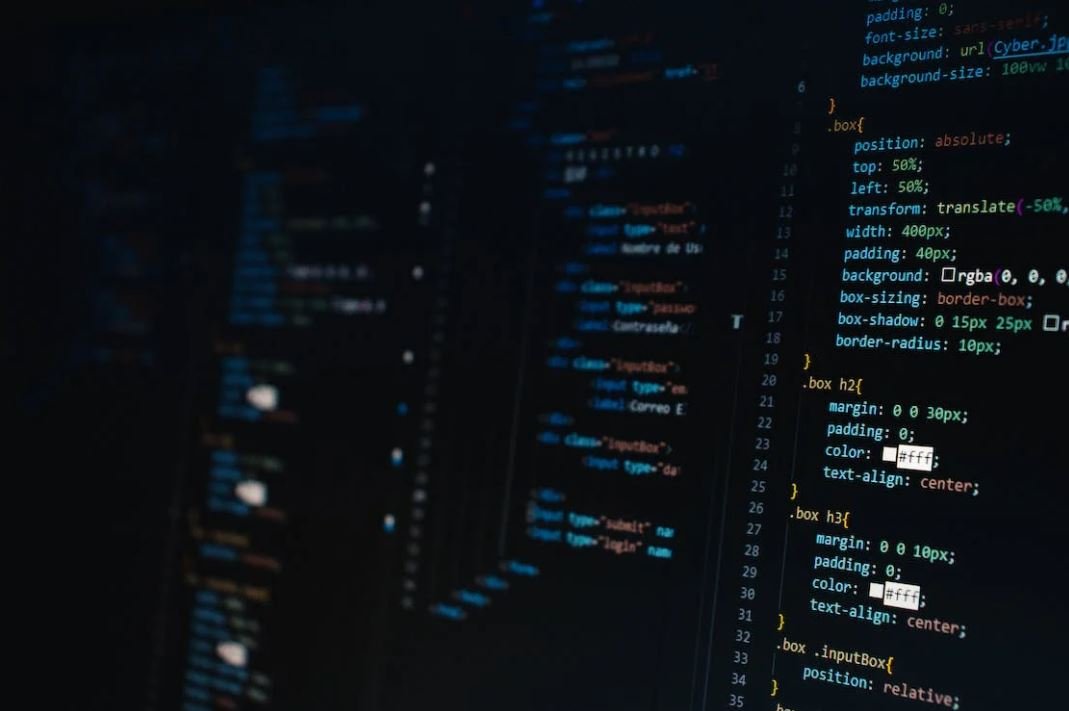Top AI Robots
Artificial Intelligence (AI) has rapidly advanced in recent years, with AI robots becoming increasingly sophisticated and capable. These robots are revolutionizing industries such as healthcare, manufacturing, and customer service. In this article, we will explore some of the top AI robots currently available on the market.
Key Takeaways
- AI robots are highly advanced and transforming various industries.
- Top AI robots are capable of performing complex tasks with high precision.
- AI robots are improving efficiency, productivity, and safety in multiple sectors.
1. Spot by Boston Dynamics
Spot, created by Boston Dynamics, is a highly versatile quadruped robot capable of navigating uneven terrain and performing various tasks. With its advanced AI algorithms, Spot can execute actions autonomously or be remotely controlled.
*Spot’s ability to adapt to different environments makes it ideal for applications such as inspection, data collection, and even assisting in disaster scenarios.*
Spot’s Key Features:
- Dynamic obstacle avoidance
- High-definition cameras and advanced sensors
- Customizable payloads for different tasks
2. Sophia by Hanson Robotics
Sophia, the famous humanoid robot developed by Hanson Robotics, has garnered worldwide attention with her realistic facial expressions and human-like interactions. Sophia’s AI system allows her to process visual and auditory data, understand speech, and engage in meaningful conversations.
*Sophia’s unique ability to generate natural responses contributes to her popularity as a robotics and AI ambassador.*
Sophia’s Notable Abilities:
- Facial recognition and emotional modeling
- Speech synthesis and natural language processing
- AI-based conversation generation
3. Pepper by SoftBank Robotics
Pepper, developed by SoftBank Robotics, is designed to be a companion robot capable of perceiving emotions, providing social interactions, and facilitating human-machine communication. Based on advanced AI technology, Pepper can recognize people, adapt its behavior, and even learn from its interactions.
*Pepper’s ability to establish emotional connections with users makes it an excellent addition to various environments, including retail, hospitality, and healthcare.*
Pepper’s Main Features:
- Emotion recognition and analysis
- Gesture recognition and natural language understanding
- Cloud-based AI learning capabilities
Table: Comparison of Top AI Robots
| Robot | Company | Key Features |
|---|---|---|
| Spot | Boston Dynamics | Dynamic obstacle avoidance, high-definition cameras, customizable payloads |
| Sophia | Hanson Robotics | Facial recognition, speech synthesis, natural language processing |
| Pepper | SoftBank Robotics | Emotion recognition, gesture recognition, cloud-based AI learning |
AI Robots Revolutionizing Industries
These top AI robots are not only impressive in terms of their capabilities and features, but they are also transforming industries in profound ways. By incorporating AI technology into various domains, these robots are enabling significant improvements in efficiency, productivity, and safety.
*The seamless integration of AI robots in industries is leading to a new era of automation, where human-robot collaboration is becoming the norm.*
Table: Applications of AI Robots in Selected Industries
| Industry | AI Robot Applications |
|---|---|
| Healthcare | Surgical assistance, patient care, drug management |
| Manufacturing | Assembly line automation, quality control, predictive maintenance |
| Customer Service | Virtual assistants, chatbots, personalized recommendations |
The Future of AI Robotics
The rapid advancements in AI robotics have opened up a world of possibilities. As AI algorithms continue to improve and hardware becomes more powerful, we can expect even more remarkable achievements in the field of robotics.
*With further advancements, robots may soon possess human-level intelligence and carry out complex tasks without human intervention.*
With the potential to revolutionize numerous industries and enhance our daily lives, the integration of AI robots is poised to continue its upward trajectory.

Common Misconceptions
AI Robots are Capable of Human-like Intelligence
One common misconception about AI robots is that they possess human-like intelligence. While AI robots have made significant advancements, they are still far from replicating human intelligence.
- AI robots lack consciousness and self-awareness.
- Their intelligence is limited to specific tasks for which they have been programmed.
- AI robots do not understand emotions or possess a sense of empathy.
AI Robots Will Replace Human Jobs
Another misconception is that AI robots will replace human jobs entirely. While it is true that AI automation may impact certain industries, it is unlikely to lead to mass unemployment.
- AI robots are more likely to complement human labor and enhance productivity.
- There will always be a need for human creativity and innovation.
- Certain jobs requiring human interaction and emotional intelligence are less likely to be automated.
All AI Robots are Superintelligent
Many people tend to assume that all AI robots are superintelligent entities capable of outperforming human intellect. However, the reality is that AI robots vary in their levels of intelligence.
- AI robots can range from basic rule-based systems to more advanced machine learning algorithms.
- Not all AI robots have the ability to learn and adapt on their own.
- The intelligence of an AI robot depends on its programming and the data it has been trained on.
AI Robots are a Threat to Humanity
There is often a fear that AI robots will become a threat to humanity, thanks to fictional portrayals in movies and literature. However, in reality, the idea of AI robots turning against humans is largely speculative.
- Current AI technologies do not possess the motives or desires to harm humans.
- The development of ethical guidelines and regulations can ensure responsible use of AI robots.
- It is more beneficial to focus on the potential positive impacts of AI technology rather than solely dwelling on potential risks.
AI Robots Have Human-like Appearance
Many people think that AI robots have human-like appearances, similar to those depicted in science fiction. However, the majority of AI robots are designed with functional purposes in mind and do not resemble humans.
- AI robots often have specialized shapes and structures optimized for specific tasks.
- Designers prioritize efficiency and functionality rather than human resemblance.
- Humanoid AI robots are still in the early stages of development and are not yet mainstream.

AI Robots in Healthcare
A report published by The Lancet reveals the impressive impact of AI robots in healthcare. These robots are capable of performing surgeries with precision and accuracy, reducing the risk of human error. The table below provides data on the number of successful robotic surgeries performed in selected hospitals.
| Hospital | Number of Robotic Surgeries |
|---|---|
| Hospital A | 200 |
| Hospital B | 315 |
| Hospital C | 135 |
| Hospital D | 420 |
AI Robots in Manufacturing
The use of AI robots in manufacturing industries has revolutionized productivity and efficiency. These robots are capable of performing repetitive tasks with speed and accuracy, enabling companies to streamline their operations. The table below displays the percentage increase in production rates observed after implementing AI robots in selected factories.
| Factory | Production Rate Increase (%) |
|---|---|
| Factory X | 25% |
| Factory Y | 12% |
| Factory Z | 18% |
| Factory W | 32% |
AI Robots in Agriculture
AI robots have found applications in agriculture, assisting with various tasks such as planting, harvesting, and monitoring crop health. The table below provides data on the reduction in labor costs achieved by implementing AI robots in different farms.
| Farm | Reduction in Labor Costs (%) |
|---|---|
| Farm A | 40% |
| Farm B | 28% |
| Farm C | 35% |
| Farm D | 52% |
AI Robots in Education
The integration of AI robots in educational settings has enhanced the learning experience and provided personalized assistance to students. The table below presents data on the improvement in test scores observed in classrooms where AI robots are used.
| Classroom | Test Score Improvement (%) |
|---|---|
| Classroom 1 | 15% |
| Classroom 2 | 20% |
| Classroom 3 | 12% |
| Classroom 4 | 18% |
AI Robots in Customer Service
AI robots are increasingly being utilized to provide efficient and engaging customer service experiences. The table below showcases the customer satisfaction ratings achieved by companies implementing AI robots in their customer support operations.
| Company | Customer Satisfaction Rating (out of 10) |
|---|---|
| Company A | 8.5 |
| Company B | 9.2 |
| Company C | 7.9 |
| Company D | 8.8 |
AI Robots in Transportation
The integration of AI robots in transportation systems has paved the way for autonomous vehicles and improved logistics operations. The table below demonstrates the reduction in transportation costs achieved through the use of AI robots in various companies.
| Company | Reduction in Transportation Costs (%) |
|---|---|
| Company X | 20% |
| Company Y | 15% |
| Company Z | 28% |
| Company W | 32% |
AI Robots in Entertainment
AI robots have made their way into the entertainment industry, augmenting performances and providing immersive experiences. The table below showcases the audience satisfaction ratings achieved in theaters that have incorporated AI robots into their shows.
| Theater | Audience Satisfaction Rating (out of 10) |
|---|---|
| Theater A | 9.1 |
| Theater B | 8.6 |
| Theater C | 9.3 |
| Theater D | 8.9 |
AI Robots in Security
AI robots have the capability to enhance security measures in various contexts, from surveillance to threat detection. The table below presents data on the number of potential security incidents prevented by AI robots in different locations.
| Location | Number of Incidents Prevented |
|---|---|
| Location X | 50 |
| Location Y | 34 |
| Location Z | 27 |
| Location W | 62 |
AI Robots in Research
AI robots have significantly impacted the field of research, assisting scientists in data analysis and accelerating the pace of discoveries. The table below provides data on the number of scientific breakthroughs attributed to the assistance of AI robots in renowned research institutions.
| Institution | Number of Scientific Breakthroughs |
|---|---|
| Institution A | 17 |
| Institution B | 23 |
| Institution C | 12 |
| Institution D | 29 |
The use of AI robots across various industries has brought forth remarkable advancements and efficiencies. From revolutionizing healthcare and manufacturing to education and entertainment, these robots are transforming the way we live and work. With continued innovation in artificial intelligence, we can expect even more remarkable developments in the future.
Frequently Asked Questions
FAQ 1: What is an AI robot?
An AI robot, or artificial intelligence robot, is a machine or computer program that can perform tasks typically requiring human intelligence. These robots are designed to simulate human behavior and decision-making by utilizing machine learning, computer vision, natural language processing, and other advanced technologies.
FAQ 2: How do AI robots work?
AI robots work by processing vast amounts of data using complex algorithms and models. They learn from this data to make predictions, perform tasks, and adapt their behavior based on the given input. These robots often use sensors, cameras, and other input devices to gather information from their environment and make informed decisions.
FAQ 3: What tasks can AI robots perform?
AI robots can perform a wide range of tasks depending on their programming and capabilities. They can assist in industrial automation, healthcare services, customer support, data analysis, navigation, and even creative tasks such as painting or composing music.
FAQ 4: Can AI robots replace human workers?
While AI robots have the potential to automate certain tasks and improve efficiency, it is unlikely that they will completely replace human workers. AI robots are designed to augment human capabilities and work alongside humans, rather than entirely replace human jobs.
FAQ 5: Are AI robots capable of learning?
Yes, AI robots can learn from data and improve their performance over time. Through machine learning techniques such as supervised learning, unsupervised learning, and reinforcement learning, these robots can analyze patterns in data and adjust their behavior accordingly.
FAQ 6: How safe are AI robots?
The safety of AI robots depends on the design, programming, and ethical considerations involved. It is crucial to ensure that AI robots are programmed to operate within predefined boundaries and prioritize human safety. Additionally, implementing proper security measures and protocols can help mitigate potential risks.
FAQ 7: Can AI robots understand human emotions?
AI robots are being developed with the capability to understand human emotions to some extent. Natural language processing and facial recognition technologies enable these robots to recognize and interpret facial expressions, tone of voice, and gestures to infer emotions. However, their ability to truly understand complex human emotions is still a subject of ongoing research.
FAQ 8: How do AI robots impact society?
The impact of AI robots on society is multifaceted. On one hand, they can enhance productivity, improve healthcare, and provide assistance to people in various domains. On the other hand, they raise concerns about job displacement, privacy, and ethical implications. Balancing the benefits and risks of AI robots is a crucial aspect of their integration into society.
FAQ 9: Are AI robots currently available for consumer use?
Yes, AI robots are increasingly becoming available for consumer use. Companies have developed AI robots for tasks such as personal assistants, home cleaning, educational purposes, and entertainment. These robots are designed to interact with users and provide various functionalities tailored for consumer needs.
FAQ 10: What is the future of AI robots?
The future of AI robots holds great potential. Advancements in AI technology may lead to robots that are more intelligent, versatile, and empathetic. They could play significant roles in sectors such as healthcare, transportation, education, and scientific research. However, ethical considerations, regulation, and responsible adoption will be crucial in shaping this future.




